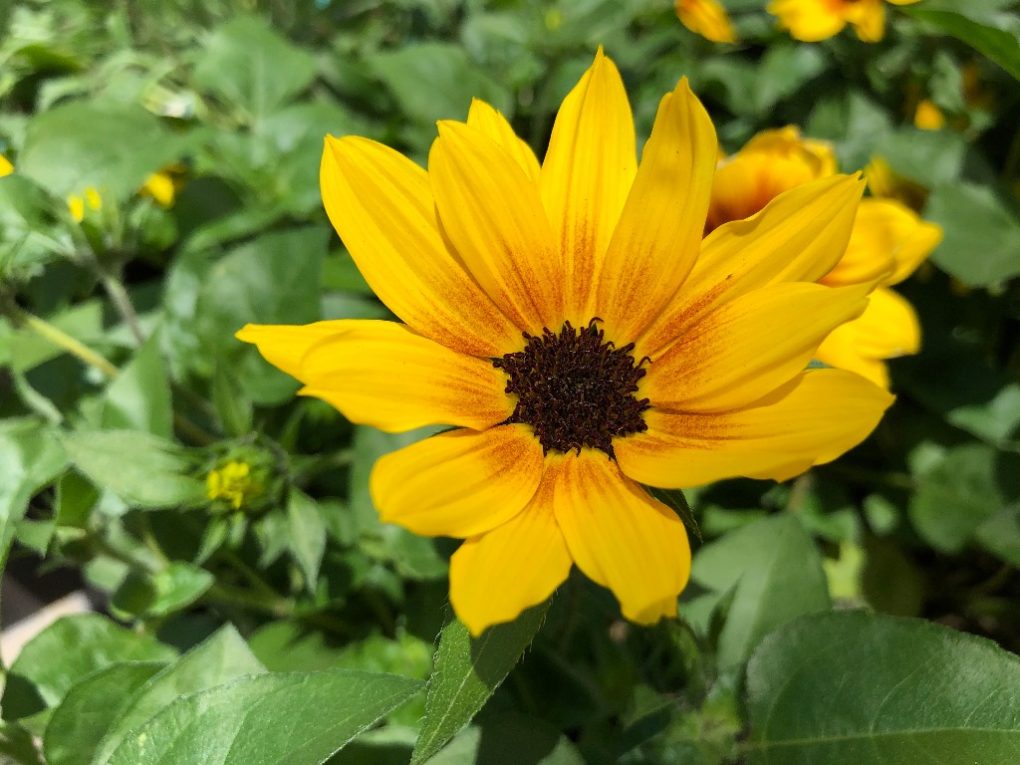Are Sunflowers Hardy: A Comprehensive Guide to Sunflower Hardiness
Yes, sunflowers are very hardy plants. They can tolerate various growing conditions, including heat, drought, and soil types. Sunflowers are often used to help clean contaminants from the soil and have even been used to help clean up radioactive sites like Chernobyl and Fukushima.

Using sunflowers allows the healthy minerals found in the soil to remain there, and toxic minerals are slowly broken down. However, while sunflowers are generally hardy, some factors can affect their growth and overall health. For example, sunflowers are heavy feeders and require nutrient-rich soil to thrive.
They also need plenty of sunlight and water, especially during the early stages of growth. Additionally, some varieties of sunflowers can be prone to certain pests and diseases, which can impact their ability to grow and produce flowers.
Table of Contents
The Hardy Sunflowers
Hardy sunflowers can withstand harsh weather conditions, such as extreme heat or drought. They also have the ability to survive in poor soil conditions. Hardy sunflowers are typically perennial, meaning they can return year after year, unlike the more common annual sunflowers.
Several types of hardy sunflowers are popular among gardeners. One of the most common is the Maximilian sunflower, which can grow up to 10 feet tall and produces masses of yellow flowers.
Another popular variety is the swamp sunflower, which can grow up to 10 feet tall and is known for its ability to thrive in wet soil conditions. Other hardy sunflowers include the Jerusalem artichoke, which is grown for its edible tubers, and the Mexican sunflower, known for its bright orange flowers and ability to attract butterflies and hummingbirds.
Factors That Affect Sunflower Hardiness
Climate, Temperature, and Soil
Sunflowers are hardy plants that can tolerate various temperatures, but extreme temperatures can affect their growth and survival. Sunflowers thrive in warm temperatures between 70 and 78°F.

If the temperature drops below this, the plant growth may slow down, and the leaves may turn yellow or brown. On the other hand, if the temperature rises above the required temperature, the plant may wilt, and the flowers may dry out. Therefore, it is important to grow sunflowers in areas with a moderate climate and avoid extreme temperatures.
The soil conditions can also affect the hardiness of sunflowers. Sunflowers prefer well-draining soils that are rich in organic matter. They can thrive in a wide range of soil pH levels but grow best in soils with a pH between 4.0 to 4.8.
If the soil is too compacted, there is a possibility that the roots may not be able to absorb enough water and nutrients, leading to stunted growth and poor hardiness. Therefore, it is important to prepare the soil properly before planting sunflowers by loosening it and adding organic matter.
Watering, Drainage, and Pests
When planting sunflowers, it’s important to prepare the soil properly by mixing in rich potting soil. Sunflowers need well-draining soil and good air circulation to prevent diseases. Overwatering can lead to disease, root rot, pests, and mold, so watering them appropriately is important.
Watering and drainage are crucial factors that can affect the hardiness of sunflowers. Sunflowers require regular watering, especially during the first few weeks after planting. However, overwatering can lead to root rot and poor hardiness.
As such, it is important to water sunflowers deeply but infrequently, giving the soil time to dry out between watering. In addition, sunflowers require good drainage to prevent waterlogging, which can suffocate the roots and lead to poor hardiness.

Pests and diseases can also affect the hardiness of sunflowers. Common pests that can damage sunflowers include caterpillars and beetles. These pests can eat the leaves and flowers, leading to poor hardiness and reduced yield.
Aphids are small insects that feed on the sap of sunflower plants, weakening the plant and making it more susceptible to disease. They also excrete a sticky substance known as honeydew, which can attract other pests like ants and sooty mold, further weakening the plant.
In addition to direct damage, pests can weaken sunflowers by transmitting diseases. For example, aphids can transmit viruses like the sunflower mosaic virus and the cucumber mosaic virus, which can cause stunted growth, yellowing, and necrosis of the leaves.
Sunflowers are also susceptible to fungal diseases such as downy mildew and rust, affecting their growth and hardiness. Therefore, it is essential to regularly monitor my sunflowers for pests and diseases and take appropriate measures to control them, such as using insecticides and fungicides.
How to Grow Hardy Sunflowers
To grow hardy sunflowers, it is important to plant them in the right location. Sunflowers need full sun and well-draining soil. They can tolerate some drought but also need regular watering to thrive. Plant the seeds about half an inch deep and six inches apart, and keep the soil moist until they germinate in 5 to 10 days.
Once the sunflowers have germinated, putting them apart from each other is important to give them room to grow. Hardy sunflowers require little maintenance, but keeping the soil moist and weed-free is important. If the sunflowers grow in a windy area, staking them may be necessary to keep them from falling over.
Sunflowers are ready to harvest when the back of the flower head turns yellow, and the petals start to fall off. Cut the flower head off the stem and hang it upside down in a dry, well-ventilated area to dry.
Once the seeds are dry, they can be removed from the flower head and stored in an airtight container. Hardy sunflower seeds can be saved for planting in the next growing season. If you’re looking for a hardy plant that’s easy to care for and has many benefits, sunflowers are an excellent choice.
Sunflowers can thrive and produce beautiful blooms and nutritious seeds with the right planting location, regular watering, and minimal maintenance. They can add beauty and value to any garden or landscape.
